Today, we are proud to be hosting a round table with four middle grade writers, discussing their writing process, development of ideas, research, and more. The round table is composed by Stephanie Burgis (The Dragon with a Chocolate Heart), Sheela Chari (Finding Mighty), Uma Krishnaswami (Step Up to the Plate, Maria Singh) and Mark Siegel (The Sand Warrior).
![]()
Mark: Thanks so much to the Book Smugglers, who have graciously welcomed us to their blog.
Let’s get started. Aspiring authors sometimes have this idea that stories are born straight onto a blank page. Would each of you share the work you do before that opening sentence?
Uma: Hi Mark. For me, each book is different. I’ve made maps, lists, timelines, collages, handmade books with pictures and artifacts representing the story–just about anything I can use to trick my mind into entering the zone. At the same time I try not to leap in too soon. I spend ages writing notes and questions {in a notebook} about any ideas that come tapping at my mental windows. It’s almost like a test. If they can endure the interrogation, there’s a story there.
Steph: I always begin writing my stories with a single opening scene that’s caught my imagination. I write that opening in a white heat without any pre-planning, just to cement my new heroine’s voice in my head. Then I set it aside for a month or two to let my subconscious simmer over it and put together the larger world and story that have been set up by that scene. It’s a very exploratory process! Because I don’t outline, I’m not a very fast writer, but I love discovering new details of the world and the characters every day as I write.
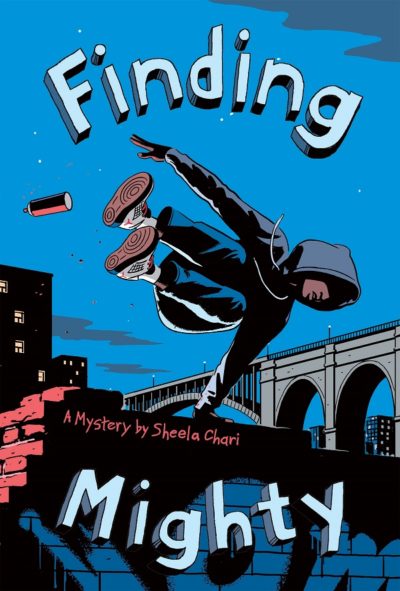
Sheela: For me, Finding Mighty started with objects — an “Om” necklace that Myla has to buy, and a graffiti tag with the same word painted by Peter’s missing brother, Mighty. How does Peter find Mighty? How will Myla help him? And why are the tag and necklace important? I didn’t know the answers to these questions, so the only way to find out was to write. What about you, Mark? How do you get started? What was your process for world-building?
Mark: 5 Worlds is a fantasy world so my brother, Alexis, and I had to ask many, many questions, just like Uma. Questions about the cultures, the climates, the ancient history, the politics, the technology, the arts. We filled books with sketches and short writings, designs, all kinds of stuff, before returning to our story.
Steph: Was it hard juggling all the material those questions raised?
Mark: Yes and no, Steph. But I love SFF best when I believe the world extends beyond what the author is sharing on the page. I believe as much time as one can spend in understanding the rules of one’s world(s), the better the story can unfold in it. But like with books that require historical research, imaginative research should never be flaunted. Especially in the first book of series, there’s a constant danger of too much exposition, which can bog down a story. So you do your research, then toss it away and dive into your story—and all the preparation and groundwork comes in as needed.
Steph: I always start with a few main characters in my head, then build a world around them. My book is about dragons and chocolate, and for me, it felt like a fairy tale version of 18th-century Germany, so I based a lot of the human society on that historical setting – but then I felt free to make all sorts of ahistorical changes to my fantasy world for the sake of the story and just for fun. For instance, there’s one scene late in the book where my heroine walks into a meeting of the king’s privy council, and I automatically started to write all the members of that council as male (because of that historical period) – then thought, Wait. Why should I stick to those rules? I’m writing a fantasy, not a history book! So I went back and changed half of them to women instead!
Uma: My stories often begin with a place and a time, and with Step Up to the Plate, Maria Singh, the history of a little-known group of people. But history is not enough for the world of a story, so like you both, Mark and Steph, after I did the research I realized that I needed to throw most of it out and keep only the details that mattered to this story. And that is all about character and motivation, relationships and conflicts and longings. The stuff of fiction. It wasn’t until I was deep into that part of the work that I began to understand the world of the story.
Sheela: Is this when the “rules” of this world fell away for you, Uma?
Uma: Not exactly. But as I wrote, I realized there were parts of this world I needed to know better, so I’d target my research accordingly to find the “rules” that applied to particular scenes. E.g, a softball rulebook from 1945, or an afternoon spent browsing through the 1940s shelves in an antique store would give me just enough to keep on going.
Sheela: It’s interesting how you all create your worlds since for me, writing contemporary mysteries means that a lot of this material is already built into my “real” world. Mark, I know you are collaborating with multiple people. How does that affect world-building?
Mark: There are five of us working together, and it’s one of those dreamed-for team projects. It truly feels like each of us loves the characters and the story more than our own egos, and treasure each other’s input. Collaborations can be wonderful, or can go very, very wrong! In our case, it feels like the five of us are discovering and exploring and enjoying each other’s contribution more and more as the project unfolds. Alexis and I script, then I thumbnail the script in a very rough form, then Matt, Xanthe and Boya each pencil different scenes. Matt then inks everything, which gives the art a unifying voice, then Xanthe does the key color design, and Boya cleans up the final color. And along the way, we’re discussing, refining, questioning, re-envisioning things, in a five-way dialogue.
Sheela: While we’re on world-building, Uma, when I was reading your book, I was thinking – how does Uma know what an “adha-adha” or half Punjabi, half Mexican meal tastes like?! Are there choices between what can be researched and what needs a fictional hand?
Uma: In the beginning I read everything I could lay my hands on about this community: an ethnographic study, first-person accounts. I watched a documentary. I pored over photographs and newspaper reports. But as Mark and Steph said, I had to set it all aside. I needed to let the story emerge as more than a collection of facts. Once I had a narrative in place, I went back to my sources to check the details. I traveled to Yuba City and met some of the descendants. The taste of the fusion foods—that’s real! It came from that meeting and from descriptions I’d read and heard. When I found nuggets of history from either first-person accounts or reported ones –about recycling, war propaganda, the POW camp, the visit to California of a figure in India’s struggle for independence, girls playing softball in the area at the time –I worked them in. I tried to keep it all in the perspective of my 9-year-old protagonist.
Mark: It’s interesting how your book feels both familiar and exotic; to me discovering the Indian-Latino experience is new, plus it’s set in the days heading towards World War II… Are you drawing on family history?
Uma: Thanks, Mark! It’s not family history, but growing up in India, I’d heard of Punjabi men who made their way to North America and never came back. Years later when I came across a documentary film about the Punjabi Mexican community in Imperial Valley and Yuba City, I was struck by that exact same feeling–as if this history were simultaneously known and unknown to me. I have to laugh at how long I read everything I could find about these people before I worked up the nerve to write a word. In all, it took me thirteen years. I couldn’t have done it without a whole lot of support from many, many people including some descendants of those Punjabi Mexican families.
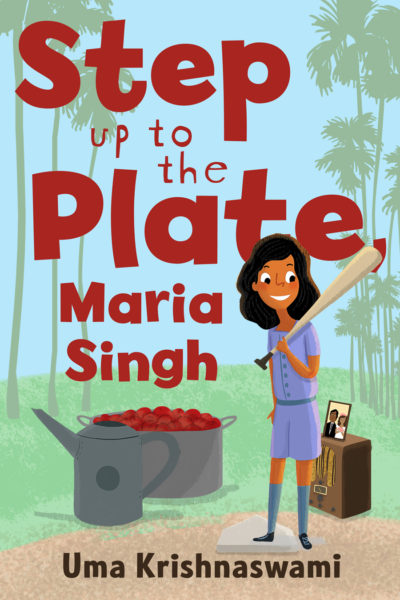
That was my path. Sheela, it’s a bit like this line from your book: “Shoes don’t tell you where they’re taking you. But they have a path and you have to follow it.” I’d love to know, what was your path in writing Finding Mighty? Did you know where you were going? What were the surprises along the way?
Sheela: Finding Mighty has two main characters: Myla and Peter. Myla’s story line started closer to me. Myla often feels like no one notices her, that she’s overshadowed by her spelling genius younger brother, Cheetah, or by her pretty and amiable best friend, Ana. In my experience, I had several beautiful and talented friends, and a brother who excelled academically, and I have to say I felt the same way Myla does! The other main character, Peter, is also twelve years old, and his story started with a graffiti tag I would see on the highway near my home that said ‘Omar.’ I would wonder – who is Omar? How did he get that tag on that sign so high off the ground? Only that person wasn’t Peter but his missing brother, Mighty. And that was how Peter’s story began — the search for Mighty. Once I saw Myla and Peter clearly in my mind, I imagined their lives intersecting – each of them helping the other, and that was how the novel came together.
Uma: With you, Steph, I noticed the humor in Dragon With a Chocolate Heart, especially in the line: “I wasn’t their hatchling any more, was I?” Talk about the role of humor in your books.
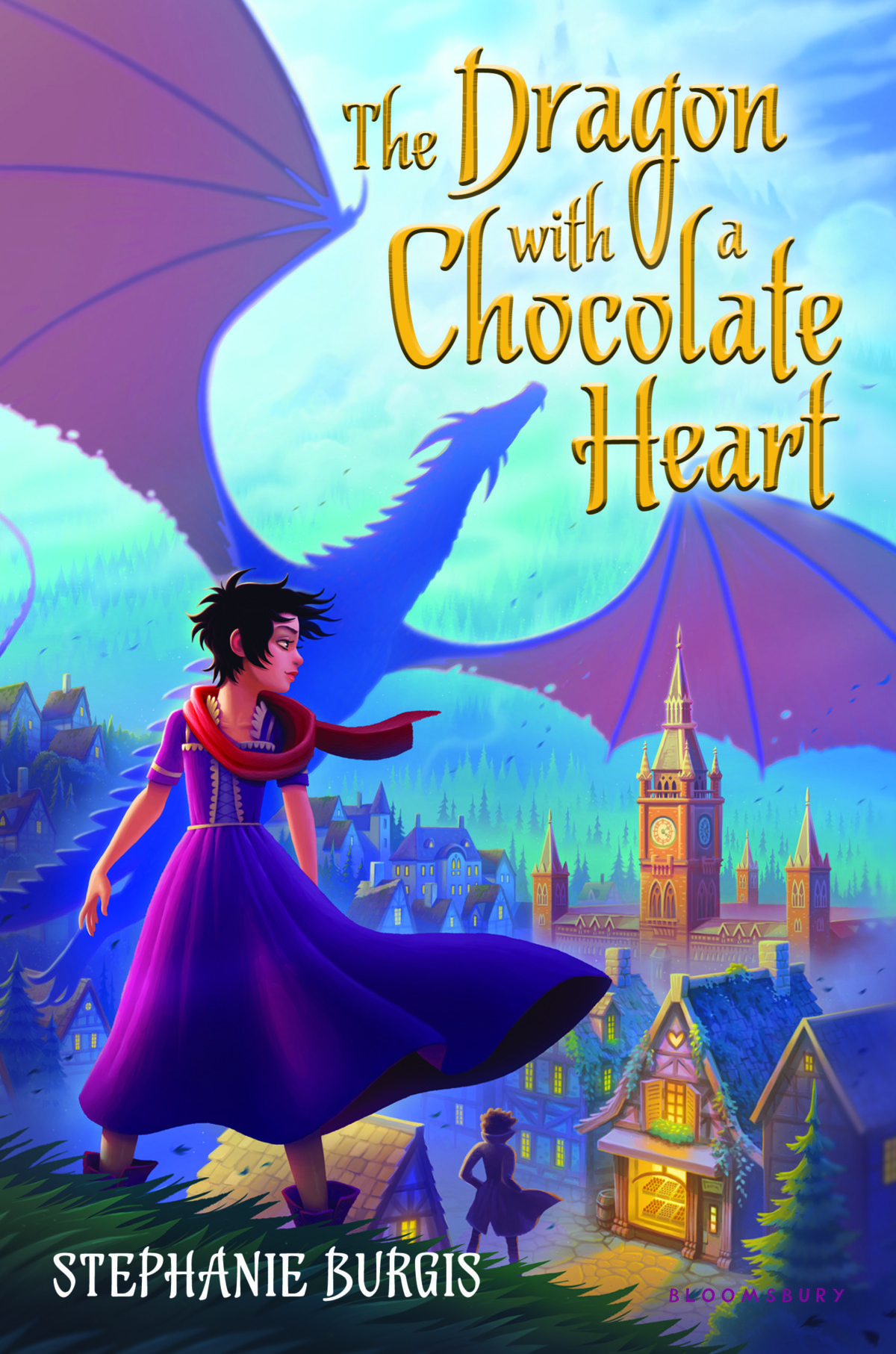
Steph: I love humor, joy and fun, and I want my MG books to be comfort-reads: stories that kids and adults can escape into whenever they need an injection of hope and fun. However, the biggest rule in all of my books is that the humor can never take precedence over emotional truth. I love writing moments that make readers grin or laugh – but if that moment of humor would obscure a real emotional shift in the story, then it can’t happen. The humor needs to arise naturally from the quirky emotional truth of each character and their interactions.
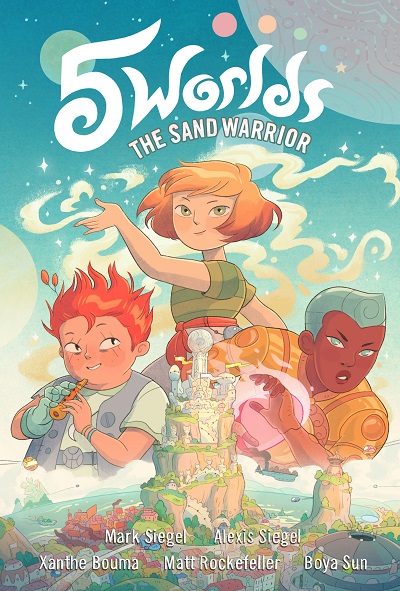
Uma: Conflict is another way of bringing truth to the surface. Mark, how do you deal with conflict in your writing? Here’s a quote from The Sand Warrior: “…there is something rotten in the heart of the fortress.” Where is that “something rotten” in the heart of your story’s real, imagined, or metaphoric fortress?
Mark:
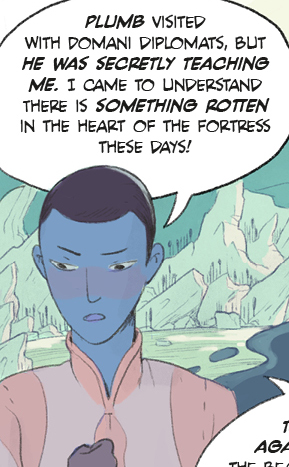
The Sand Warrior is the first book of the 5 Worlds series. There is an overarching villain threatening these worlds, but at first its threat isn’t obvious to us or to our heroine, Oona. Small hints accumulate in the first chapters—including this one, when a friend tells Oona that something doesn’t seem right on his home world; other little hints include tensions between different humans, such as casually racist remarks made to a waiter in a café
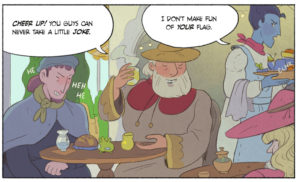
but it’s not long before the menace becomes overt, in the form of war. But even with her world under attack, Oona struggles to understand what exactly is behind all this strife—and in the process, she bonds with new friends and comes to discover a great mystery about her own existence. She’s quickly thrown into all-out conflict, and within that, her quest is often thwarted. As the writer’s saying goes “make life tough for your protagonist.”
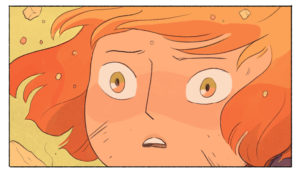
Steph: Conflict is definitely important, but so is the balance between character and plot. Sheela, Finding Mighty is so full of thrilling tension and suspense, along with wonderful characterization. (There was one moment between family members at the end of the book that made me cry, in the best possible way!) What comes first for you, the characters or the mystery?
Sheela: With Peter, the mystery came first (searching for Mighty, and the clues along the way). With Myla, her character was what drew me. I don’t keep a notebook, but like Myla, I imagine the stories behind the graffiti tags I see where I live near NYC. I also watched an excellent documentary on graffiti – Style Wars – and from that I began to understand the longing and passion that young people feel about getting their tag up on a wall or the side of a freight train. I was also channeling West Side Story a little, thinking about how art draws people together in mysterious ways, whether it’s spray-painting with a crew or dancing together on a set. All of this thinking I brought to my characters, while keeping the mystery going. A lot to juggle!
Steph: While we’re talking about characters, Uma, I love the way Maria is inspired to ask questions and take risks by her teacher Miss Newman. Did you have any teachers of your own that inspired you in a similar way? Also, I loved how vividly you conveyed Maria’s joy in the game. Are you an athlete yourself, or did you have to work to put yourself in that mindset?
Uma: Thanks, Steph. I had a high school teacher who encouraged me to write and opened my eyes to literature and poetry. I was taking a lot of math and science classes at the time because that was considered to be what the smart kids did. At the time of course (those teenage years) I resented all advice and rarely followed it. But I did read, and books became my mentors. Athlete? Not even in my dreams. I was a klutzy kid. But as I wrote this story in early drafts, I became intrigued by the culture of softball, especially among girls, especially at that time. I had the great good fortune to meet a 90-year old woman who had played the game as a girl in the area–much of the joy Maria feels was channeled from her. So yes, it was work but good work!
Sheela: And speaking of good work, I think we did a lot of that here today! I learned so much from hearing how you all write, research, plan…and dream. Thanks everyone, and to the Book Smugglers for having us. I can’t wait to see these books in print!
Steph: Thanks to the Book Smugglers and to you guys! This was fun.
Uma: Many thanks, Steph, Mark, and Sheela, and thanks to Book Smugglers for the bandwidth!
Mark: Thanks, all. And all our books come out this month! Grab one from your favorite bookseller!
![]()
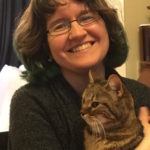
Stephanie Burgis is the author of THE DRAGON WITH A CHOCOLATE HEART and the KAT, INCORRIGIBLE trilogy, as well as two historical fantasy novels for adults. She grew up in America but now lives in Wales, surrounded by castles and coffee shops. Visit her online at stephanieburgis.com and @stephanieburgis

Sheela Chari is the author of FINDING MIGHTY, a Junior Library Guild Selection, and VANISHED, which was an APALA Children’s Literature Honor Book, an Edgar Award nominee, and an Al’s Book Club Pick on the Today Show. She has an MFA in Fiction from New York University and teaches creative writing at Mercy College. Sheela lives in New York. Visit her online at sheelachari.com and @wordsbysheela.
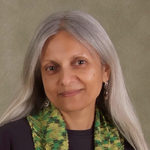
Uma Krishnaswami is the author of over twenty books for young readers, including retold traditional stories, picture books, and novels. Her new middle grade novel, STEP UP TO THE PLATE, MARIA SINGH, is a Fall 2017 Junior Library Guild Selection. She lives in Victoria, BC, Canada, and can be found online at umakrishnaswami.org.

Mark Siegel has written and illustrated several award-winning picture books and graphic novels, including the New York Times bestseller “Sailor Twain, or the Mermaid in the Hudson”; “To Dance,” with his wife Siena Cherson Siegel; “Oskar and the Eight Blessings,” with Tanya and Richard Simon; “How to Read a Story,” with Kate Messner, and the “5 Worlds” graphic novel series which launches May 2017, with Alexis Siegel, Boya Sun, Xanthe Bouma, and Matt Rockefeller. 5 Worlds Book 1 is THE SAND WARRIOR. Mark is also the founder and editorial director of First Second Books, Macmillan’s graphic novel house. He lives with his family in New York. Lots more about 5 Worlds on Tumblr: https://www.tumblr.com/search/5worldsteam.
![]()
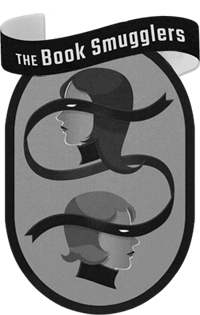









4 Comments
Shobhit@ House Of Review
May 26, 2017 at 11:16 amWow What an interesting conversation between the four people.I appreciate this type of meetings as it opens up answers to so many questions in your mind when it comes to writing.
I agree with Uma’s way of putting everything down questions related to any idea before taking it out.